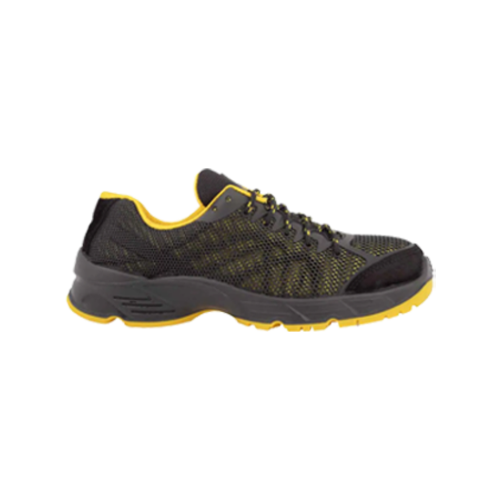Sports Safety Shoes Matter

When it comes to sports and athletic activities, safety should always be the top priority. One crucial aspect of ensuring safety is wearing the right gear, and this includes sports safety shoes. These shoes are specifically designed to provide protection, support, and traction to prevent injuries and enhance performance. In this article, we will delve into the importance of sports safety shoes, their key features, and how to choose the right pair for your specific needs.
Introduction to Sports Safety Shoes
Sports safety shoes are not just a fashion statement or a requirement for professional athletes; they are a necessity for anyone engaging in sports or physical activities. Whether you’re a casual runner, a professional soccer player, or an avid hiker, the right shoes can make a significant difference in your performance and safety. These shoes are engineered with materials and technologies that cater to the specific demands of different sports, providing the necessary comfort, support, and protection.
Key Features of Sports Safety Shoes
Support and Stability: Good sports safety shoes offer excellent arch support and stability. This is crucial for preventing injuries such as ankle sprains and strains. The support helps in maintaining the foot’s natural alignment, reducing the stress on the ankle and knee joints.
Traction and Grip: The outsole of sports safety shoes is designed to provide superior traction on various surfaces. This helps in preventing slips and falls, which can lead to severe injuries. The tread pattern and the material used in the outsole play a significant role in determining the shoe’s grip.
Cushioning and Comfort: Adequate cushioning is essential for absorbing the impact of each step, reducing the risk of injuries to the foot and the lower limb. Comfortable shoes also enhance performance by allowing athletes to focus on their game rather than discomfort.
Breathability and Moisture Management: Sports safety shoes often feature breathable materials that allow for airflow and moisture wicking. This keeps the foot dry and cool, preventing blisters and discomfort during prolonged activities.
Protection: Some sports require additional protection, such as toe caps in soccer shoes or midfoot plates in trail running shoes. This protective element safeguards against direct impacts or sharp objects that could cause injury.
Choosing the Right Sports Safety Shoes
Selecting the appropriate sports safety shoes can be overwhelming given the wide range of options available. Here are some tips to help you make an informed decision:
Sport Specific: Different sports have different demands. For example, running shoes are designed for forward motion and shock absorption, whereas soccer shoes need to provide stability and traction for quick cuts and changes in direction.
Fit: The fit is crucial. Shoes that are too tight can cause discomfort and lead to injuries like blisters, while shoes that are too loose can cause instability. It’s recommended to try on shoes in the afternoon, as feet tend to swell throughout the day.
Terrain and Conditions: Consider the terrain and conditions you’ll be playing in. For instance, trail running shoes have more aggressive tread patterns for better grip on uneven and slippery surfaces.
Personal Preferences: Some athletes prefer a more minimalist shoe for a closer-to-the-ground feel, while others prefer more cushioning for comfort. It’s essential to balance personal preference with the specific demands of your sport.
Budget: Quality sports safety shoes can range significantly in price. Set a budget and look for shoes that meet your needs within that range. Keep in mind that while cheaper options might be tempting, investing in quality can pay off in terms of performance and injury prevention.
FAQs
What are the most common injuries prevented by sports safety shoes?
+The most common injuries prevented by sports safety shoes include ankle sprains, foot blisters, plantar fasciitis, and bruising from direct impacts. Properly designed shoes can significantly reduce the risk of these injuries by providing support, cushioning, and protection.
How often should I replace my sports safety shoes?
+The lifespan of sports safety shoes depends on usage. For runners, it's generally recommended to replace shoes every 300 to 500 miles or about every 3 to 6 months, depending on running frequency and intensity. Other sports may have different guidelines, but as a rule of thumb, if the cushioning starts to feel less effective or the support diminishes, it's time to consider replacing your shoes.
Can sports safety shoes improve performance?
+Yes, sports safety shoes can indeed improve performance. By providing the right amount of support, cushioning, and traction, these shoes enable athletes to perform at their best. Good shoes can enhance speed, agility, and endurance, allowing for better overall performance in the respective sport.
Conclusion
Sports safety shoes are not just an accessory but an essential component of athletic gear. They play a critical role in preventing injuries, enhancing performance, and ensuring comfort during sports activities. With the vast array of options available, choosing the right pair can seem daunting, but by considering the specific demands of your sport, your personal preferences, and the key features of sports safety shoes, you can make an informed decision. Remember, investing in quality sports safety shoes is an investment in your health, performance, and enjoyment of the sport.



